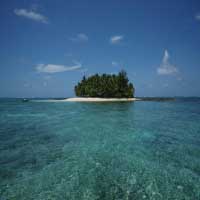
this was from Seeking Alpha --and of course our purpose is another view of the iron market and not a specific company like Vale- so I wasnt sure whether to post or not-the xperts often have diametrically opposing views on any subject so its just another view -Vale BHP and Rio are the big 3 iron producers-this btw is the 1st iron article I've seen to really deal w the fertilizer aspect also-
Vale S.A. ( VALE ) is currently available at a significant discount in comparison to its peers in the mining industry, primarily due to downward fluctuations in the commodity market. The prices of iron-ore, fertilizer nutrients and other resources in the commodity market have dipped to recent lows due to the economic slowdown in China, Europe and Brazil. However, demand will likely begin to outpace supply as China considers a stimulus package , the auto industry continues to gain momentum, and emerging markets worldwide continue to grow.
A side-by-side comparison can be made with diversified mining firms like BHP Billiton Limited ( BHP ), Rio Tinto plc ( RIO ), Barrick Gold Corporation ( ABX ) and Freeport-McMoRan Copper & Gold In c. ( FCX ). Among these firms, Vale currently has the second largest market cap, trailing only BHP Billiton, while it currently has the lowest stock price by far. Vale also has the lowest price-to-earnings ratio among these firms. ......
Vale's recent earnings release outlined a bullish sentiment for its long-term outlook, based on recovering macroeconomic conditions and key investments that will prosper behind corresponding demand growth. Operating revenue for the second quarter increased 7.2% sequentially to $12.15 billion; 71.3% of the revenue came from ferrous materials like iron-ore, marking an increase of 190 bps sequentially. Fertilizer nutrients accounted for 7.6% of total revenue, an increase of 30 bps sequentially and 190 bps year-on-year (YOY). Vale allocated 47.6% of its $4.29 billion in total investments to ferrous minerals. In the second quarter, 12% of total investments went to fertilizer nutrients, marking an increase of 310 bps sequentially and 470 bps YOY. Vale noted that 25% of the agricultural land worldwide is highly degraded.
The earnings release also cited an improved housing market, improving global auto sales and macroeconomic conditions that should be on the upswing within the year. China's annual GDP is still down, but it did increase to 7% sequentially from 6.7%. Vale believes the first quarter may have been China's bottom. Shipments to Asia accounted for 51% of Vale's total revenue in both the first and second quarter of 2012. China contributed to 31.3% of total revenue, while Japan accounted for 10.5%. Sales to Europe grew to 19.1% of total revenue, an increase of 240 bps sequentially. Brazil also accounted for 19% of Vale's total revenue. The earnings release also touched on positive strides Vale made on key investments worldwide. Vale recently obtained the preliminary environmental license for its Carajas S11D iron ore project in the Amazon. This is the largest mine in Vale's history.
Vale will utilize innovative procedures like truckless mining and reduced electricity consumption, while cutting the emission of greenhouse gases by 50% in order to reduce its environmental impact in the rainforest. Achieving production at this mine could double Vale's iron ore output by increasing its mining capacity by an additional 90 million metric tons annually. Vale is currently focused on meeting government demands in order to mitigate the potential harm to the Amazon ecosystem. Vale is also working on various steel investments and investments abroad to hedge its interests if Carajas S11D falls through. Vale is already Brazil's largest railway operator , however, it has recently showed interest in participating in auctions for Brazil's latest railway concessions. The recent announcement by the government forecast 10,000 km of railway projects. As Brazil's largest exporter, Vale's network already consists of 10,000 km of railway in Brazil.
Vale recently reached a 30-month agreement with the government of Mozambique regarding the railways connecting the border of the country to the northern region in conjunction with the construction and operation of a coal maritime terminal. Aiding in the construction of infrastructure around Vale's assets in this country helps improve revenue by lowering the risks for potential losses during transportation. Vale has already trained over a 1,000 employees in this region in order to improve the skills and operations regarding its investments here. Vale also recently postponed construction for its $3 billion potash project in Canada, but remains committed to bringing the fertilizer asset into production over the long term when the economic conditions here improve. Vale is still moving forward with its $5.9 billion fertilizer asset located in Argentina.
I think current shareholders should hold onto Vale, while those looking at the sector should consider it as an investment, as management is confident in its long-term growth outlook behind investing in basic materials like iron-ore and fertilizers. I believe these commodities will continually increase in demand as 2 billion people worldwide enter the middle class through the next 20 years. I think increasing food prices from droughts will increase fertilizer demand and recovering economies will increase iron-ore demand in the short- and long-term as well. Iron-ore prices are expected to rebound in September . Vale is currently focused on 2016 as the target date for starting production at the largest iron ore mine in the world. [black bolding added]
Disclosure: I have no positions in any stocks mentioned, and no plans to initiate any positions within the next 72 hours. I wrote this article myself, and it expresses my own opinions. I am not receiving compensation for it (other than from Seeking Alpha). I have no business relationship with any company whose stock is mentioned in this article.
